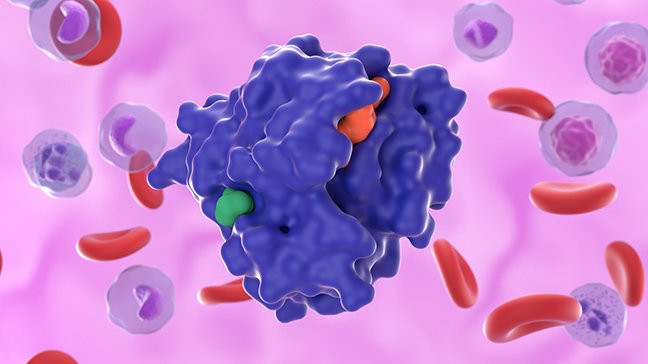- Diseases
- Acoustic Neuroma (14)
- Adrenal Gland Tumor (22)
- Anal Cancer (66)
- Anemia (2)
- Appendix Cancer (16)
- Bile Duct Cancer (26)
- Bladder Cancer (68)
- Brain Metastases (28)
- Brain Tumor (228)
- Breast Cancer (716)
- Breast Implant-Associated Anaplastic Large Cell Lymphoma (2)
- Cancer of Unknown Primary (4)
- Carcinoid Tumor (8)
- Cervical Cancer (154)
- Colon Cancer (164)
- Colorectal Cancer (110)
- Endocrine Tumor (4)
- Esophageal Cancer (40)
- Eye Cancer (36)
- Fallopian Tube Cancer (6)
- Germ Cell Tumor (2)
- Gestational Trophoblastic Disease (2)
- Head and Neck Cancer (6)
- Kidney Cancer (124)
- Leukemia (344)
- Liver Cancer (50)
- Lung Cancer (288)
- Lymphoma (284)
- Mesothelioma (14)
- Metastasis (30)
- Multiple Myeloma (98)
- Myelodysplastic Syndrome (60)
- Myeloproliferative Neoplasm (4)
- Neuroendocrine Tumors (16)
- Oral Cancer (100)
- Ovarian Cancer (170)
- Pancreatic Cancer (164)
- Parathyroid Disease (2)
- Penile Cancer (14)
- Pituitary Tumor (6)
- Prostate Cancer (144)
- Rectal Cancer (58)
- Renal Medullary Carcinoma (6)
- Salivary Gland Cancer (14)
- Sarcoma (234)
- Skin Cancer (294)
- Skull Base Tumors (56)
- Spinal Tumor (12)
- Stomach Cancer (58)
- Testicular Cancer (28)
- Throat Cancer (90)
- Thymoma (6)
- Thyroid Cancer (98)
- Tonsil Cancer (30)
- Uterine Cancer (78)
- Vaginal Cancer (14)
- Vulvar Cancer (18)
- Cancer Topic
- Adolescent and Young Adult Cancer Issues (20)
- Advance Care Planning (10)
- Biostatistics (2)
- Blood Donation (18)
- Bone Health (8)
- COVID-19 (362)
- Cancer Recurrence (118)
- Childhood Cancer Issues (118)
- Clinical Trials (624)
- Complementary Integrative Medicine (24)
- Cytogenetics (2)
- DNA Methylation (4)
- Diagnosis (230)
- Epigenetics (6)
- Fertility (64)
- Follow-up Guidelines (2)
- Health Disparities (14)
- Hereditary Cancer Syndromes (124)
- Immunology (18)
- Li-Fraumeni Syndrome (8)
- Mental Health (118)
- Molecular Diagnostics (8)
- Pain Management (62)
- Palliative Care (8)
- Pathology (10)
- Physical Therapy (18)
- Pregnancy (18)
- Prevention (894)
- Research (390)
- Second Opinion (72)
- Sexuality (16)
- Side Effects (602)
- Sleep Disorders (10)
- Stem Cell Transplantation Cellular Therapy (216)
- Support (398)
- Survivorship (322)
- Symptoms (184)
- Treatment (1768)
4 advances in radiation therapy for lung cancer treatment
3 minute read | Published March 17, 2021
Medically Reviewed | Last reviewed by an MD Anderson Cancer Center medical professional on March 17, 2021
One of the most difficult aspects of treating lung cancer with radiation therapy is determining the best way to deliver it. Ideally, doctors want to provide the most effective dose to a tumor while limiting exposure to healthy adjacent organs, tissues and structures.
The challenge with lungs is that they’re always in motion. This can make it difficult to keep radiation focused directly on tumors.
“Right now, we have to ask patients to hold their breath during treatment to minimize movement,” says radiation oncologist Zhongxing Liao, M.D.
That can make it tricky to protect critical organs, such as the heart, liver — and even unaffected sections of the lungs.
Fortunately, all of that is changing. Here’s how.
Next-generation technologies include real-time motion management
Next-generation technologies are enabling physicians to shield healthy tissues more effectively. By using machines that can scan patients during their treatment sessions, radiation oncologists are able to make real-time adjustments to accommodate patients’ movements.
“The technology of radiation therapy is evolving every day,” says Liao. “We went from simple X-ray films in the early 1990s to cutting-edge, on-board imaging in the 2010s. Now, we’re building our second-generation proton therapy machine, which will use respiratory motion management and real-time tracking to monitor each patient’s position.”
Combination cancer treatments becoming standard of care
Other recent advances in radiation therapy for lung cancer include stereotactic ablative radiation therapy (SABR) and stereotactic body radiation therapy (SBRT). Both deliver super-high-dose radiation to small targets in a very short period of time — usually four to 10 treatments within one to two weeks.
“That makes them very effective at killing cancer cells,” Liao says. “It also makes them comparable to surgery in terms of their ability to successfully eliminate some cancers.”
Proton therapy can be a good option for many patients, too, because of its unique depth-dose characteristics. And combining radiation therapy with other treatments (such as chemotherapy, immunotherapy, and targeted therapy) has proven so effective that chemotherapy plus radiation therapy and immunotherapy is now considered the standard of care for patients with locally advanced lung cancers.
“Proton therapy is especially useful when tumors are located next to the heart,” adds Liao. “It’s also good at treating solid tumors, because those have enough mass to prevent its radiation from passing through them.”
Options for both treating lung cancer and limiting its progression
Radiation therapy is often used in early-stage lung cancer patients who cannot — or choose not to — have surgery. But radiation therapy can also limit disease progression in patients with more advanced lung cancers.
“MD Anderson has some of the most advanced radiation technology available,” Liao says. “So, we have treatment options for patients in every stage of lung cancer.”
Protecting patients from unnecessary radiation exposure
To prevent damage to healthy structures from excess radiation exposure during lung cancer treatment, MD Anderson has established dose constraints for every organ located in or near the chest cavity, such as the heart, liver and esophagus.
“We set our bar very high to make sure critical organs are well-protected,” says Liao. “Every tumor is unique, so we evaluate each treatment plan before therapy starts to determine which radiation therapy technology best fits the needs of the patient.”
Request an appointment at MD Anderson online or by calling 1-833-612-1764.

We have treatment options for patients in every stage of lung cancer.
Zhongxing Liao, M.D.
Physician





